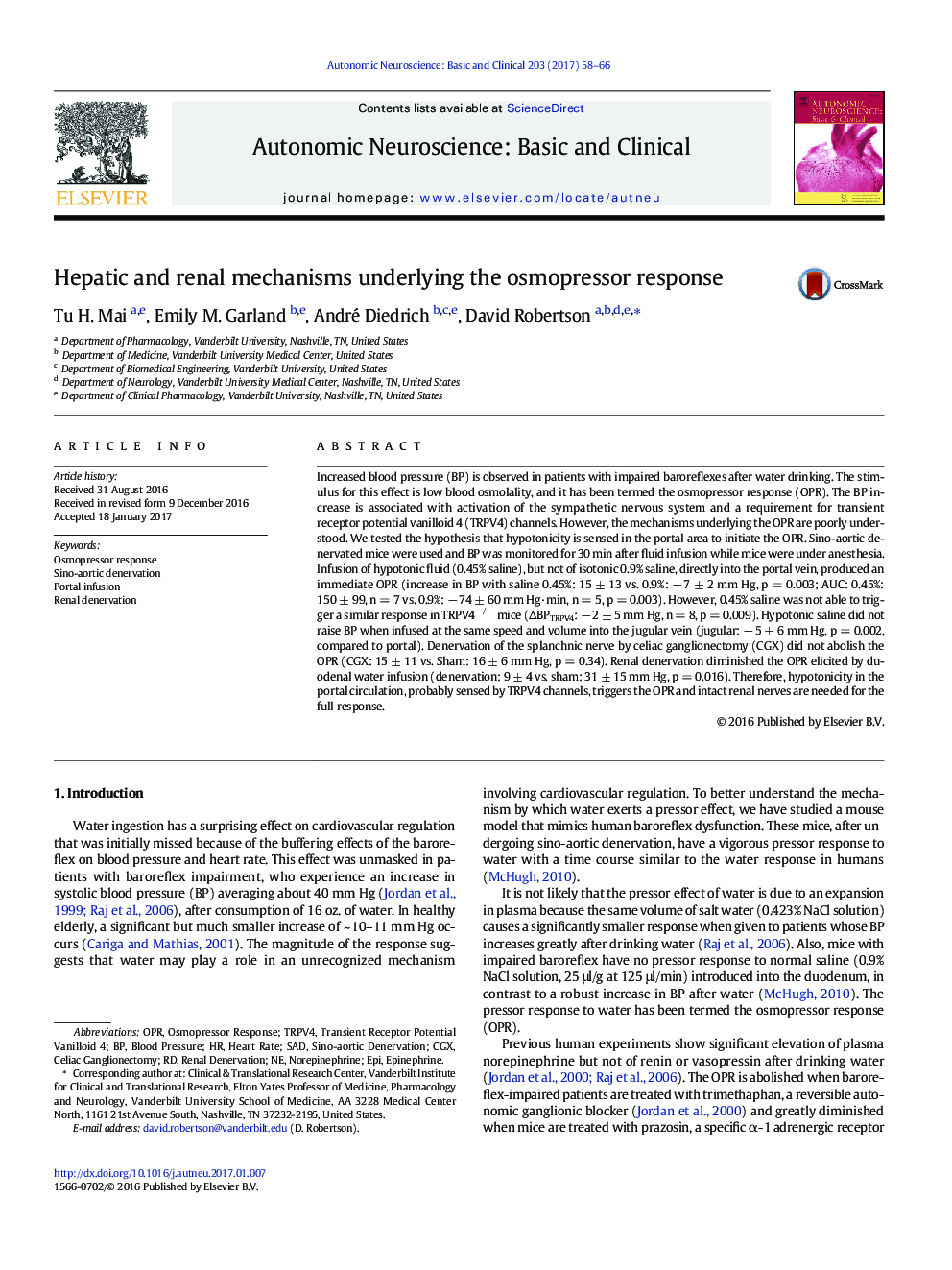| Article ID | Journal | Published Year | Pages | File Type |
|---|---|---|---|---|
| 5626096 | Autonomic Neuroscience | 2017 | 9 Pages |
â¢The OPR is initiated by a hypo-osmotic signal in the portal area, and TRPV4 receptors are essential for the response.â¢Both vagal and splanchnic nerves carry OPR afferent signals; if one is severed, the other can compensate.â¢Renal sympathetic nerve activity is important in the efferent arm of the OPR.
Increased blood pressure (BP) is observed in patients with impaired baroreflexes after water drinking. The stimulus for this effect is low blood osmolality, and it has been termed the osmopressor response (OPR). The BP increase is associated with activation of the sympathetic nervous system and a requirement for transient receptor potential vanilloid 4 (TRPV4) channels. However, the mechanisms underlying the OPR are poorly understood. We tested the hypothesis that hypotonicity is sensed in the portal area to initiate the OPR. Sino-aortic denervated mice were used and BP was monitored for 30 min after fluid infusion while mice were under anesthesia. Infusion of hypotonic fluid (0.45% saline), but not of isotonic 0.9% saline, directly into the portal vein, produced an immediate OPR (increase in BP with saline 0.45%: 15 ± 13 vs. 0.9%: â 7 ± 2 mm Hg, p = 0.003; AUC: 0.45%: 150 ± 99, n = 7 vs. 0.9%: â 74 ± 60 mm Hg·min, n = 5, p = 0.003). However, 0.45% saline was not able to trigger a similar response in TRPV4â/â mice (ÎBPTRPV4: â 2 ± 5 mm Hg, n = 8, p = 0.009). Hypotonic saline did not raise BP when infused at the same speed and volume into the jugular vein (jugular: â 5 ± 6 mm Hg, p = 0.002, compared to portal). Denervation of the splanchnic nerve by celiac ganglionectomy (CGX) did not abolish the OPR (CGX: 15 ± 11 vs. Sham: 16 ± 6 mm Hg, p = 0.34). Renal denervation diminished the OPR elicited by duodenal water infusion (denervation: 9 ± 4 vs. sham: 31 ± 15 mm Hg, p = 0.016). Therefore, hypotonicity in the portal circulation, probably sensed by TRPV4 channels, triggers the OPR and intact renal nerves are needed for the full response.
